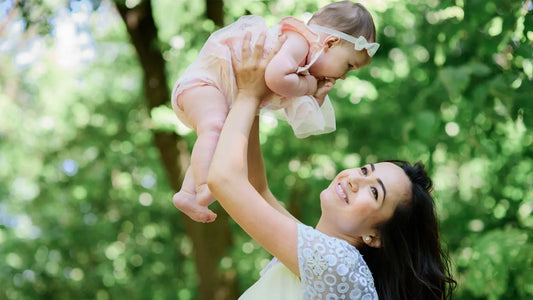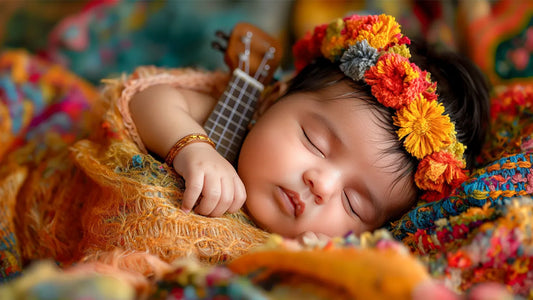Baby Body Language Cues and Their Meaning
From the moment babies come into this world, they try to communicate with us. Well before they can speak their first words, infants cry, wiggle, smile, frown, and gesture in an attempt to express their essential needs and feelings. As parents who want to provide attentive care and build strong bonds, learning to decode these baby body language cues is a crucial skill. If we know how to recognize what our babies’ small movements and reactions truly mean, we’ll be much better equipped to respond appropriately.
In this blog post, we’ll explore some of the most common Baby Mannerisms, what message they are trying to convey, and how you can use these cues as a tool to connect on a deeper level. By understanding the meanings behind each scrunch of the nose, arm wave, and whimper, you’ll soon be fluent in “Baby Talk”! Read on as we decode the many signs and signals that nonverbal infants use to say so much without words.
1. Facial Expressions: A baby's face is extremely expressive. Those sweet little facial movements give us major insight into what babies are thinking and feeling. Here are some telling facial expressions to look for:
- Smiling: Seeing your baby crack their first smile is an amazing milestone. Happy, toothless grins mean your little one is joyful and content.
- Furrowed brow: If your baby's brows are furrowed and their forehead creases, they're likely confused or concentrating very hard on something.
- Frowning or grimacing: Grimaces and frowns often mean a baby is uncomfortable, unhappy, or in pain. Time for a diaper check or feeding!
- Raised eyebrows: When babies arch their brows, they're typically showing excitement or interest. New sights, sounds, and sensations often elicit this look.
- Stuck-out tongue: Babies explore the world around them with their mouths, so a stuck-out tongue means your little explorer is hard at work playfully investigating things.
2. Excited Arm Waving: Have you ever seen your baby lying on their back randomly waving and pumping their arms with excitement? Most likely, they are simply expressing excess energy and happiness. It's a healthy release for them and nothing to worry about. You'll likely see arm pumping when your baby first wakes up too. Enjoy it as a display of your little one's joy.
3. Turning Toward Your Voice: Newborns can't see very far at first, but they recognize Mom and Dad's voices right away. When your baby turns his head searching in the direction of your voice, it signals he feels comforted by you and wants to connect. So, narrate what you're doing as you care for the baby and watch him swivel his head looking for you!
4. Stilling: Have you ever witnessed your fussy baby suddenly stop crying and moving altogether, almost like a freeze frame? This may last up to 10 seconds. Experts think this signals the baby is potentially overloaded but trying to focus on what's causing the stress before deciding if he should tune it out or ramp up crying again. Stay close as your baby is processing something intensely in those moments of stilling.
5. The Startle Reflex/Moro reflex: Ever notice your sleeping baby suddenly throw their arms out like they are shocked awake? This involuntary move is called the startle reflex and occurs because the baby's nervous system is still immature. She's not actually scared—it happens when she's transitioning sleep cycles and still getting used to life outside the womb. Swaddling can help reduce startles.

6. Crying Patterns: All babies cry, especially in the first three months as that's their main way of communicating needs and discomfort. There's no minimizing a baby's cry—as a parent, you need to respond promptly when your baby cries to determine the cause and comfort them. Here's what to listen for:
- Low-pitched cry: A soft, moaning low-pitched cry often means the baby is feeling hungry or tired.
- Persistent, high-pitched cry: Sharp, high-pitched cries that aren't soothed easily usually indicate the baby is in pain from gas, colic, teething, or other upsets.
- Rise-and-fall cry: A cry that seems to increase and decrease in intensity can mean the baby needs to be burped or has a wet, soiled diaper that's irritating them.
- Short, grizzly cries: Frustrated grunting or short whimpers signal the baby is bored, wants attention, or needs distraction.
Conclusion:
Learning baby body language has many perks for parents. Not only does it help you understand what your baby needs in the moment so you can respond appropriately, but it also lets you tune into more subtle shifts in mood and disposition over time.
So next time your little one furrows their brows, flashes a toothless grin, or lets out a sharp cry, remember—their body language has meaning! Tuning into physical cues and signals is key for healthy bonding.
Shop for the Best Baby Care Products
FAQs
1. What can a baby's smile indicate?
Ans. A baby's smile usually signifies joy and contentment. It's a positive sign of their happiness.
2. When should I be concerned about my baby's facial expressions?
Ans. If your baby frequently grimaces or frowns, it could signal discomfort, unhappiness, or pain, and it's worth checking if they need a diaper change or feeding.
3. What is the startle reflex in babies?
Ans. The startle reflex, also known as the Moro reflex, is an involuntary reaction where a baby throws their arms out suddenly. It's a normal part of development and often happens during sleep transitions.
4. Why do babies stick out their tongues?
Ans. Babies use their mouths to explore the world around them, so a stuck-out tongue usually means they're playfully investigating things and engaging with their environment.
5. Why do babies wave their arms excitedly?
Ans. Excited arm waving is often a sign of excess energy and happiness. It's a healthy expression of joy, especially common when babies wake up.
6. What does it mean if my baby turns towards my voice?
Ans. When a baby turns towards your voice, it indicates that they recognize and feel comforted by you.
7. How can I interpret my baby's crying patterns?
Ans. Different crying patterns can indicate various needs or discomforts. For example, a low-pitched cry might mean hunger or tiredness, while a persistent high-pitched cry could signal pain or discomfort.




